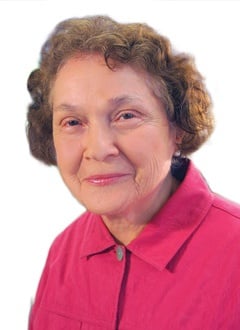
With classroom-tested tips from our Curricular Resources authors on how to improve your teaching at any grade level, each Writing Masters installment will share author insights and practical suggestions on teaching writing in the classroom that you can use the very next day. This week in the Writing Master series, Laura Robb discusses three types of writing workshop conferences, and then offers some preparation tips.
Circulating among students throughout the writing process informs you of their strengths and needs and enables you to intervene and scaffold when necessary.—Laura Robb
Zooming in on Conferring
by Laura Robb
For me, there are three types of conferring that occur during writing workshop. On-the-spot conferences are brief exchanges between student and teacher that happen daily while the teacher walks around the classroom to connect with each writer. Issues the teacher can’t resolve in one to two minutes can result in the teacher suggesting a partner or teacher-student conference.
1. On-the-Spot Conferences happen every day as the teacher circulates among students. From these quick conversations, you can feel and observe the pulse of each class you teach, which allows you to develop minilessons that support small groups or the entire class. Carry a pencil and clipboard with several sheets of paper lined with sticky notes. Sticky notes can be reminders for the student that contain the heart of your conversation or you can note whether you arranged a partner conference or a teacher-student conference.
Circulating among students throughout the writing process informs you of their strengths and needs and enables you to intervene and scaffold when necessary.
2. Partner Conferences. Often, an issue can be resolved with a peer partner as long as the student has the knowledge base and experience to solve the problem. If, for example, the class has studied and evaluated leads from picture books and their independent reading, I feel certain that students can provide each other enough support to determine whether the lead of a story raises questions and causes readers to continue reading or to select the lead (from two or more that the author has written) that works best for a piece of writing .Use partner conferences to help make class writing time more efficient and to give students more responsibility.
3. Scheduled Teacher-Student Conferences. When students require your expertise to solve a writing problem, schedule a formal conference. These conferences should be focused on one topic. Schedule five-minute conferences (use a timer if you need to) while students are writing; you can probably meet with two to three students during a class period in addition to on-the-spot conferences. If a student requires more time, then schedule five-minute conferences over two to four days.
Keeping these meetings short means you won’t lose the rest of the class while you devote fifteen to twenty minutes with just one student. In SMART WRITING: Practical Units for Middle School Writers, you’ll find questions to help identify students who need intervention conferences to improve their writing skill.
Teaching Tip: Focus and Prepare Your Conferences
In addition to your documenting scheduled conferences, have students document what they discussed and did at their conference.
- Make sure you know with whom you will meet before you start class so that you will not waste time during class.
- Narrow your topic. During an on-the-spot conference, you may have noted several issues in a student’s writing, but focus on only one thing at a time. For example, instead of thinking you’ll work on punctuation, prioritize and decide on discussing commas or end-of-sentence punctuation.
- Share the focus with the student. Let the student do most of the talking.
- Close the conference by asking the student to repeat what she learned and understands.
- Based on the content of the conference, invite the student to set a goal. You can note the goal on the conference form.
- Schedule another conference with you, set up a peer partner conference, or tell the student that she can work independently.
For more on Smart Writing, including a preview of the Teaching Guide and sample lessons, click here.
♦ ♦ ♦ ♦
 Laura Robb is the author of several classic books on literacy, including Teaching Reading in Middle School, Teaching Nonfiction Writing: A Practical Guide, and the Smart Writing series. She brings more than four decades of teaching experience to her authorship and her professional development workshops, which she conducts throughout the country.
Laura Robb is the author of several classic books on literacy, including Teaching Reading in Middle School, Teaching Nonfiction Writing: A Practical Guide, and the Smart Writing series. She brings more than four decades of teaching experience to her authorship and her professional development workshops, which she conducts throughout the country.
♦ ♦ ♦ ♦
Next week Jim Burke reviews five essential lessons for students on management of time, attention and workload.
Click here to see the full Writing Masters Blog Series lineup, and, using the form below, sign up for email alerts when each new blog is posted.


